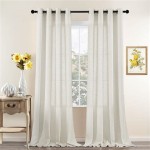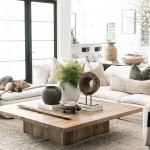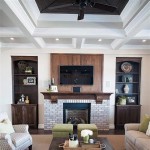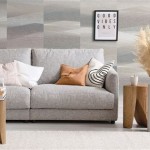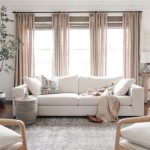Arranging Furniture In Living Room: A Comprehensive Guide
The arrangement of furniture within a living room significantly impacts its functionality, aesthetics, and overall atmosphere. A well-arranged living room promotes comfort, encourages social interaction, and optimizes the available space. Conversely, a poorly arranged room can feel cramped, cluttered, and unwelcoming. Effective furniture arrangement requires careful consideration of various factors, including the room's size and shape, the intended use of the space, the placement of focal points, and the principles of design.
Before commencing the arrangement process, it is essential to assess the living room's dimensions and architectural features. This assessment involves measuring the length and width of the room, noting the location of windows, doors, fireplaces, and any other permanent fixtures. Understanding the room's limitations and opportunities is crucial for making informed decisions about furniture placement.
Consider the primary function of the living room. Is it primarily intended for relaxation and entertainment, or will it also serve as a space for work or dining? Defining the room's purpose will guide the selection and arrangement of furniture. A living room designed for relaxation may prioritize comfortable seating and a large television, while a living room used for entertaining may require ample seating and a layout that facilitates conversation.
Identifying the Focal Point
Every well-designed living room should have a focal point, which serves as the visual anchor of the space. Common focal points include a fireplace, a large window with a scenic view, a statement piece of artwork, or a built-in entertainment center. Once the focal point has been identified, the furniture arrangement should be oriented towards it. Seating arrangements should be positioned to provide comfortable viewing angles and facilitate engagement with the focal point.
If the living room lacks a natural focal point, one can be created artificially. This can be achieved by arranging furniture around a large area rug, a coffee table, or a carefully curated collection of decorative items. The goal is to create a visual center that draws the eye and provides a sense of balance and harmony to the room.
Consider the size of the furniture pieces in relation to the focal point. Oversized furniture can overwhelm a small focal point, while undersized furniture can get lost in a large space. Aim for a proportional balance that complements the focal point without detracting from its prominence.
Creating Conversation Areas
A well-arranged living room should encourage social interaction. To achieve this, it is important to create distinct conversation areas, where people can comfortably engage in dialogue. This typically involves arranging seating in a way that allows people to face each other, fostering a sense of connection and intimacy.
Avoid pushing all the furniture against the walls, a common mistake that can make a room feel impersonal and disconnected. Instead, float furniture away from the walls to create more intimate seating arrangements. This also helps to define the space and make it feel more inviting.
Use area rugs to define conversation areas and anchor the furniture within them. Area rugs not only add visual interest but also help to create a sense of cohesion and unity within the room. Choose a rug that is large enough to accommodate all the furniture in the conversation area, or at least the front legs of the furniture.
Incorporate coffee tables and side tables within conversation areas to provide convenient surfaces for drinks, snacks, and other items. These tables should be within easy reach of all seating positions, allowing people to comfortably converse without having to strain or reach awkwardly.
Consider the flow of traffic when arranging furniture in conversation areas. Ensure that there is ample space for people to move freely between seating positions and around the room. Avoid creating obstacles or bottlenecks that could disrupt the flow of traffic and make the room feel cramped.
Optimizing Space and Traffic Flow
Effective space optimization is crucial for creating a functional and comfortable living room. This involves strategically arranging furniture to maximize the available space and ensure smooth traffic flow. Avoid overcrowding the room with too much furniture, which can make it feel cramped and claustrophobic.
Utilize vertical space to maximize storage and minimize clutter. Tall bookshelves, vertical cabinets, and wall-mounted shelves can provide ample storage without taking up valuable floor space. This is particularly important in smaller living rooms where every square inch counts.
Consider using multi-functional furniture to save space and enhance versatility. Sofa beds, ottomans with storage, and coffee tables with lift-top mechanisms can serve multiple purposes, making them ideal for smaller living rooms or multi-purpose spaces.
Pay attention to the placement of doors and windows when arranging furniture. Avoid blocking doorways or obstructing natural light. Position furniture in a way that allows for easy access to doors and windows, ensuring that the room remains bright and airy.
Create clear pathways for traffic flow by leaving ample space between furniture pieces. Aim for at least 30 inches of walking space between furniture and walls. This will allow people to move freely around the room without bumping into furniture or feeling cramped.
Consider the use of diagonal arrangements to create a more dynamic and visually interesting space. Angling furniture pieces can break up the monotony of a rectangular room and create a sense of movement and energy.
Use mirrors strategically to create the illusion of more space. Mirrors can reflect light and create depth, making a small room feel larger and more open. Position mirrors to reflect natural light or to highlight a focal point in the room.
In addition to these key points, consider the following tips for arranging furniture in a living room:
*Rhythm and Balance:
Create a sense of visual rhythm and balance by distributing furniture evenly throughout the room. Avoid clustering all the furniture on one side of the room or creating an imbalance between different areas. *Scale and Proportion:
Ensure that the furniture is appropriately scaled for the size of the room. Oversized furniture can overwhelm a small room, while undersized furniture can get lost in a large space. *Color and Texture:
Use color and texture to create visual interest and add depth to the room. Coordinate the colors of the furniture, rugs, and accessories to create a cohesive and harmonious look. *Personal Style:
Ultimately, the best furniture arrangement is one that reflects your personal style and preferences. Don't be afraid to experiment with different arrangements until you find one that feels comfortable and inviting. *Experimentation:
The best way to discover the optimal arrangement is to experiment. Don't be afraid to try different layouts and furniture placements until you find one that feels right. Consider using furniture sliders to make it easier to move heavy items around the room. *Functionality:
Prioritize functionality when arranging furniture. Ensure that the arrangement is practical and meets your needs in terms of seating, storage, and traffic flow. *Lighting:
Consider the lighting when arranging furniture. Position furniture to take advantage of natural light and supplement it with artificial lighting to create a warm and inviting atmosphere. *Art and Accessories:
Incorporate art and accessories to personalize the space and add visual interest. Choose pieces that complement the furniture and reflect your personal style. *Decluttering:
Before arranging furniture, declutter the room and remove any unnecessary items. This will help to create a more spacious and organized environment. *Professional Help:
If you are struggling to arrange furniture effectively, consider seeking professional help from an interior designer. An interior designer can provide expert guidance and help you create a living room that is both functional and aesthetically pleasing.By carefully considering these factors and applying the principles of design, it is possible to create a living room that is both functional and aesthetically pleasing. Effective furniture arrangement can transform a space from cramped and uninviting to comfortable, welcoming, and conducive to relaxation and social interaction.
:max_bytes(150000):strip_icc()/CarinaSkrobeckiPhoto_JessicaNelsonDesign_252222ndAve_01-47bc103d13e34f8d89179a86e968e7eb.jpg?strip=all)
12 Rules To Arrange Living Room Furniture

How To Arrange Living Room Furniture Calgary

How To Arrange Furniture In A Long Living Room 2025 Grace My Space

Tips For Arranging Living Room Furniture

How To Arrange Furniture In A Long Living Room Setting For Four Interiors

How To Arrange Furniture In An Open Living And Dining Room Board

Reader Question How To Arrange A Large Living Room Stauffer Design Co An Interior Company
How To Perfect Your Living Room Furniture Layout
:strip_icc()/102917832-0b84a075c81c49d3a4e9d9f0c2e494a9.jpg?strip=all)
Living Room Layouts To Make The Most Of Your Gathering Space

9 Living Room Layout Ideas Castlery Us

